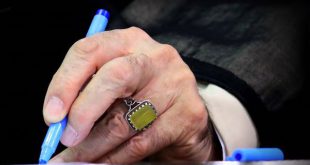Edmund Hayes provides an innovative approach to exploring early Shiʿism, moving beyond doctrinal history to provide an analysis of the socio-political processes leading to the canonisation of the Occultation of the twelfth Imam.
In 874 CE, the eleventh Imam died, and the Imami community splintered. The institutions of the Imamate were maintained by the dead Imam’s agents, who asserted they were in contact with a hidden twelfth Imam. This was the beginning of ‘Twelver’ Shiʿism. Edmund Hayes provides an innovative approach to exploring early Shiʿism, moving beyond doctrinal history to provide an analysis of the socio-political processes leading to the canonisation of the Occultation of the twelfth Imam. Hayes shows how these agents cemented their authority by reproducing the physical signs of the Imamate, including protocols of succession, letters and the alm taxes. Four of these agents were ultimately canonised as “envoys” but traces of earlier conceptions of authority remain embedded in the earliest reports. Hayes dissects the complex and contradictory Occultation narratives to show how, amidst the claims of numerous actors, the institutional positioning of the envoys allowed them to assert a quasi-Imamic authority in the absence of an Imam.
On the eighth night of Rabiʿ al-Awwal, in the year 260 of the Hijra (874 CE) the Imam al-H ˙ asan b. ʿAli al-ʿAskarı died in Samarra, then the capital city of the ʿAbbasid Empire. Hasan was too young to die – just twenty-eight or twenty-nine years old – and he had been leader of the small, but widely dispersed religious community of the Imami Shiʿa for only six years.With no obvious successor to replace him, his death refreshed a political crisis that had been brewing since his father’s lifetime. H ˙ asan’s bitter rival – his brother Jaʿfar – seized the opportunity to reassert his own claim to succeed to the Imamate. Though Jaʿfar had some initial success in calling the Shiʿa to support him, he was ultimately rejected, to be remembered in Twelver Shiʿi sources as Jaʿfar “the Liar.” His failure was not from want of trying. Upon H˙ asan’s death, Jaʿfar had leapt into action, mounting a dramatic attempt to seize the property of his dead brother. In one report, Jaʿfar is described as bringing a band of horsemen to raid and loot the house. In another, Jaʿfar instigates someone to use an axe to break down the door of the dead Imam’s house. Yet another report, also hostile to Jaʿfar, gives us details about the tactics to which Jaʿfar resorted in order to get his hands on the family wealth – even as his brother’s corpse was yet warm:
On the night of [the death of] Abu Muh˙ ammad [al-ʿAskarı], Jaʿfar sealed the storehouses and whatever was in the house, and then he returned to his own lodgings. In the morning, he came to the house and entered it so as to carry off the things upon which he had placed his seal. But when he opened the seals (khawatim) and went inside, we saw there was nothing but a trifling amount left in the house and in the storehouses, so he beat all of the servants and the slave girls, but they said to him, “Do not beat us, by God! Indeed, we saw the possessions, and the men loaded up the camels in the street, but we were unable to speak or move until the camels set off, after which the doors were locked just as they had been.” Jaʿfar gave out a great howl of dismay, and struck his head in regret at what had left the house….
About the Author
Edmund Hayes is researcher at Radboud University, Nijmegen. He has authored numerous articles at the intersection between the intellectual, religious, and social history of early Islam, including on the institutions of the Shiʿi Imamate, Islamic revenues, charity and taxation, excommunication, ethnicity and gender and sexuality.
Bibliographic Information
Title: Agents of the Hidden Imam: Forging Twelver Shiʿism, 850–950 CE
Author(s): Edmund Hayes
Publisher: Cambridge University Press
Length: 292 pages
ISBN: 978-1108834391
Pub. Date: February 17, 2022
 Ijtihad Network Being Wise and Faithful Muslim in the Contemporary World
Ijtihad Network Being Wise and Faithful Muslim in the Contemporary World


love